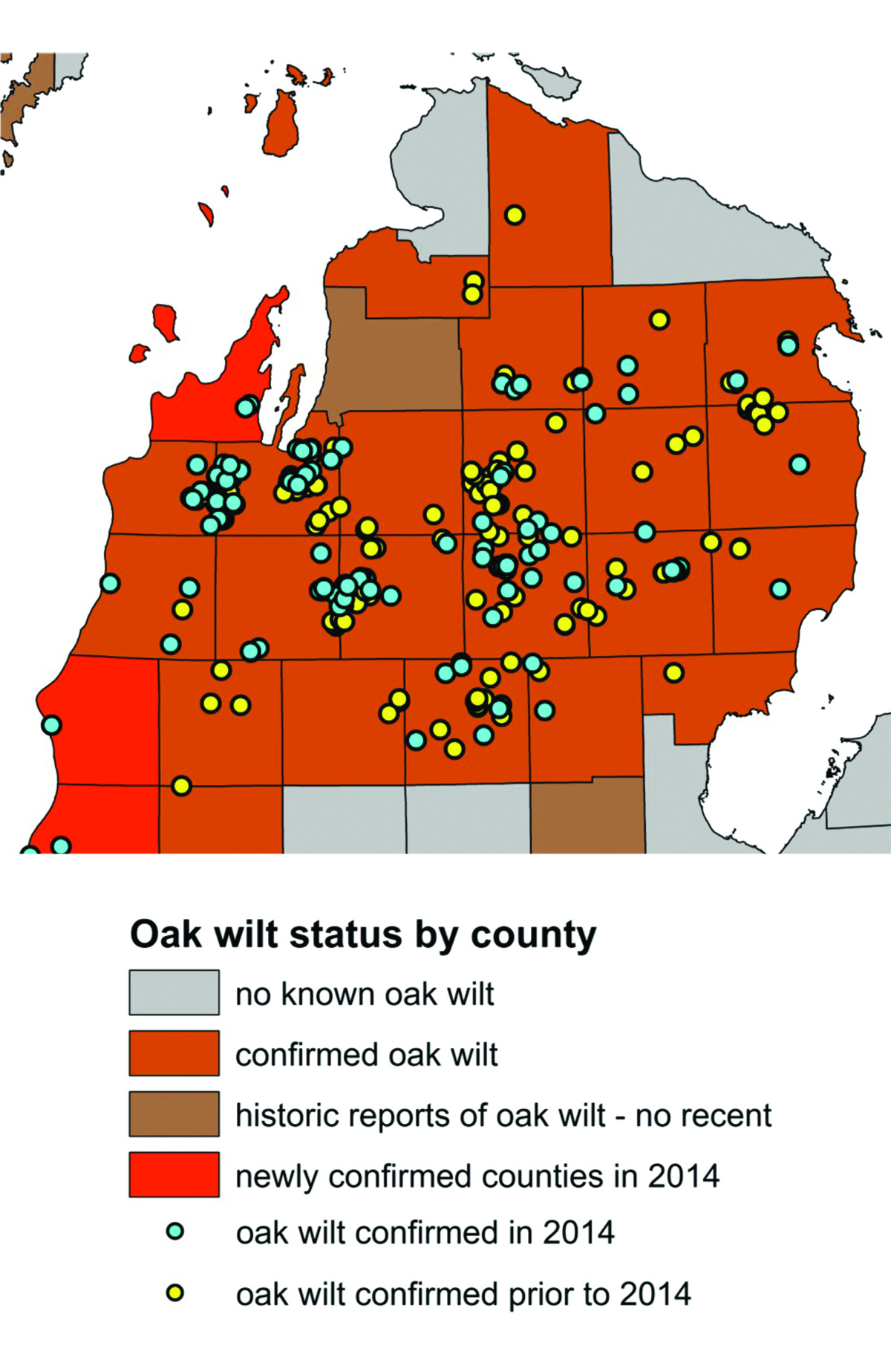Editor’ Note: This is the first in a three-part series on Oak Wilt, a fungal disease attacking Oak trees in Northern Michigan.
REGION – Dutch elm disease was first reported in the United States in 1928 when beetles carrying the fungal disease came over in a shipment of logs from The Netherlands. The disease spread from New York City across the country, reaching Detroit in 1950. It killed almost all of the American Elm trees in North America.
The Emerald Ash Borer was discovered in Detroit in 2002. It’ not known for sure how the alien beetle found its way into the United States, but it is thought to have hitched a ride on solid wood packing material carried in cargo ships or airplanes that originated in Asia, the insects’ native land.
The insect larvae feeds on the inner bark of ash trees, killing the tree. Those dead trees were often cut into firewood and transported through the state, taking the beetle larvae with it. The insects have killed hundreds of millions of Ash trees throughout North America. There are few live ash trees left in Roscommon County.
The most recent threat to area forests is Oak Wilt. Similar to Dutch elm disease, both are fatal to the trees, and both can travel from tree to tree through root grafts. Oak wilt is believed to have originated in Central or South America. It is prevalent throughout Texas, and is believed to have been carried to Michigan on firewood.
Brittany Mauricette, Conservation District Forester and Julie Crick, MSU Extension Forester, recently held a presentation on Oak Wilt; how to prevent it, identify it, and treat it once found.

Oak wilt mostly affects trees in the red oak family including red, black and pin oaks – common trees found in Roscommon County. It is a fungus that is spread through spores via wind or insects. It is introduced into the tree through a wound, often from recent pruning or other injuries.
Once infected, the fungus grows, clogging the vascular system of the tree, stopping water from flowing through the tree. The leaves turn reddish to bronze and begin to wilt and curl. The tree will die within months of getting the disease. Adjacent trees can be infected through the roots of adjacent trees.
During the year the tree dies, the fungus still produces pressure pads which are full of spores of the fungus. In order to slow the spread of the disease, the recently killed tree must be disposed of properly.
‘I’ve seen a ton of (wilt) in Roscommon County,’ Mauricette said. ‘Houghton Lake is one of the epicenters of the state. There’ a high density of people in a small area with a lot of red oak in the area.’
Neighboring Crawford County hasn’t seen as many instances of Oak Wilt because of the type of trees growing in the county which is primarily Jack Pine.
In Oscoda County, the US Forest Service (USFS) will be removing all the Red Oak trees in the Wagner Lake and Island Lake campgrounds.
Karlis Lazda is the Forest specialist for the Mio and Huron Shores Districts of the USFS.
‘We have had Oak Wilt since 2009, chasing it, removing trees, trenching and severing roots; it’ still spreading,’ Lazda said. ‘We are being pro-active and removing all the oak but the white oak.’
Tree removal at the campgrounds will occur in the fall after they close. They will be replaced by Red and White Pine trees.
‘An ounce of prevention is worth a pound of cure.’ ~ Ben Franklin
‘We see it (oak wilt) mostly around resident’ homes, probably because they are pruning during the time they shouldn’t – April 15 to the end of July,’ Lazda said.
The warm months of the year, generally April through October, are when the picnic beetles are active and are attracted to the cut trees. The best way to protect your oaks is to not prune during those months, don’t cut oak down, don’t injure them at all.
If you suspect one of your trees has oak wilt, either Mauricette or Crick.
‘We can visit to inspect and give an assessment. We can also send samples to Lansing,’ Mauricette said.
For more information on oak wilt or other invasive species, call Mauricette at 989-732-4021 or Crick at 989-275-7179.






